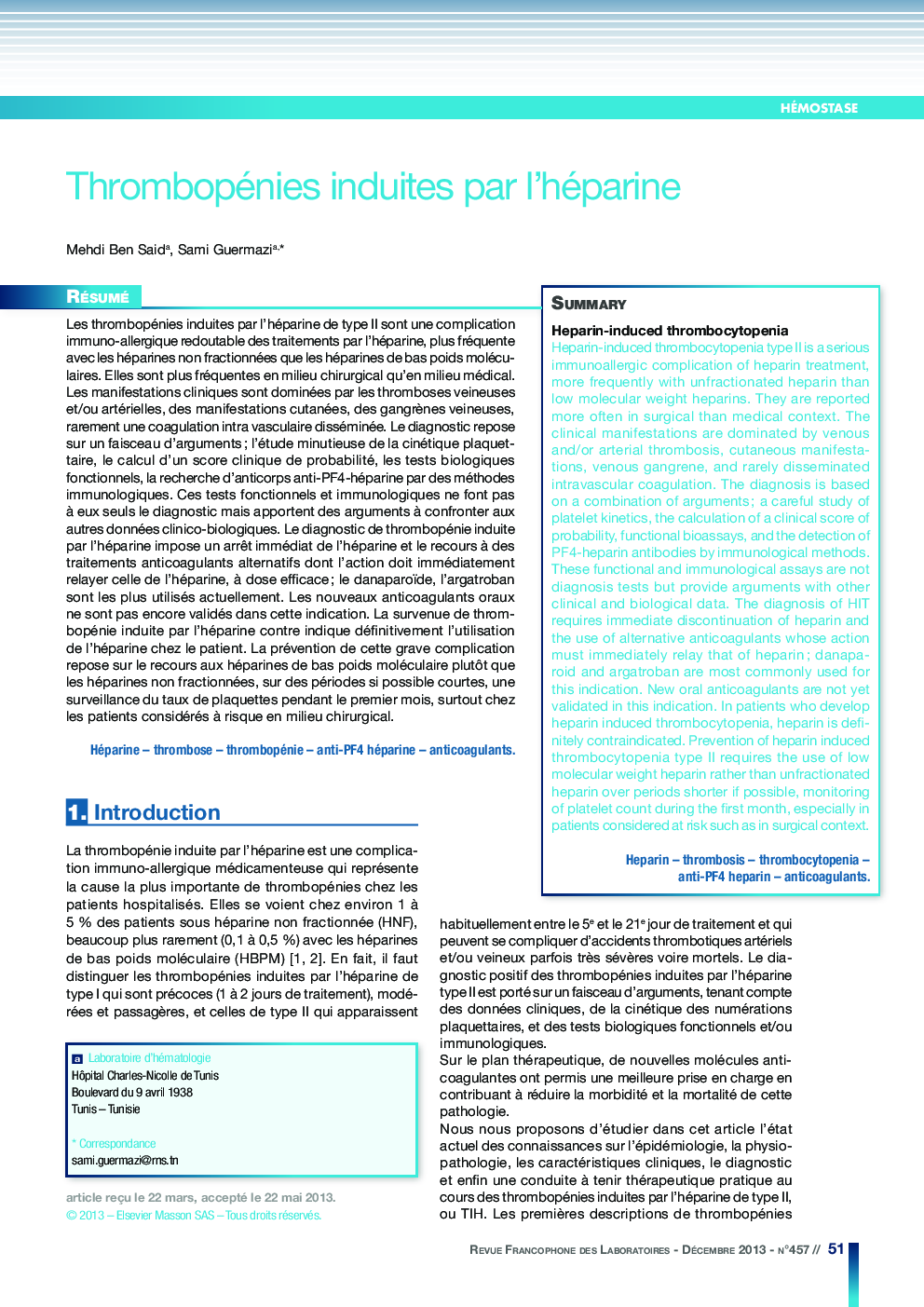| Article ID | Journal | Published Year | Pages | File Type |
|---|---|---|---|---|
| 7650676 | Revue Francophone des Laboratoires | 2013 | 9 Pages |
Abstract
Heparin-induced thrombocytopenia type II is a serious immunoallergic complication of heparin treatment, more frequently with unfractionated heparin than low molecular weight heparins. They are reported more often in surgical than medical context. The clinical manifestations are dominated by venous and/or arterial thrombosis, cutaneous manifestations, venous gangrene, and rarely disseminated intravascular coagulation. The diagnosis is based on a combination of arguments; a careful study of platelet kinetics, the calculation of a clinical score of probability, functional bioassays, and the detection of PF4-heparin antibodies by immunological methods. These functional and immunological assays are not diagnosis tests but provide arguments with other clinical and biological data. The diagnosis of HIT requires immediate discontinuation of heparin and the use of alternative anticoagulants whose action must immediately relay that of heparin; danaparoid and argatroban are most commonly used for this indication. New oral anticoagulants are not yet validated in this indication. In patients who develop heparin induced thrombocytopenia, heparin is definitely contraindicated. Prevention of heparin induced thrombocytopenia type II requires the use of low molecular weight heparin rather than unfractionated heparin over periods shorter if possible, monitoring of platelet count during the first month, especially in patients considered at risk such as in surgical context.
Related Topics
Physical Sciences and Engineering
Chemistry
Analytical Chemistry
Authors
Mehdi Ben Saida, Sami Guermazi,
